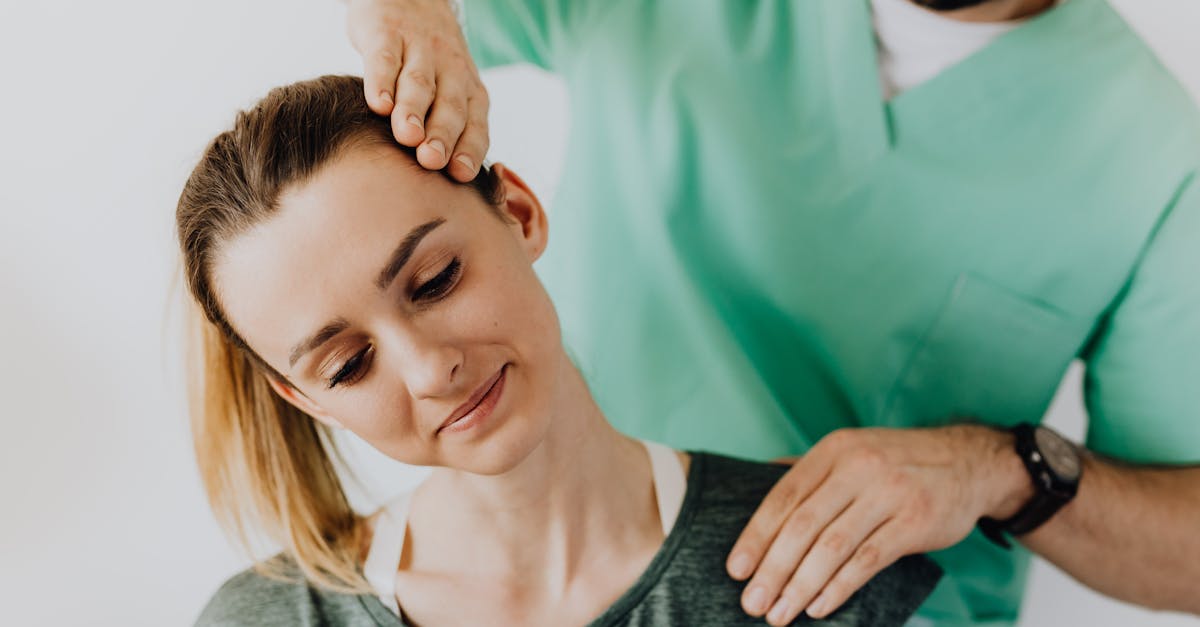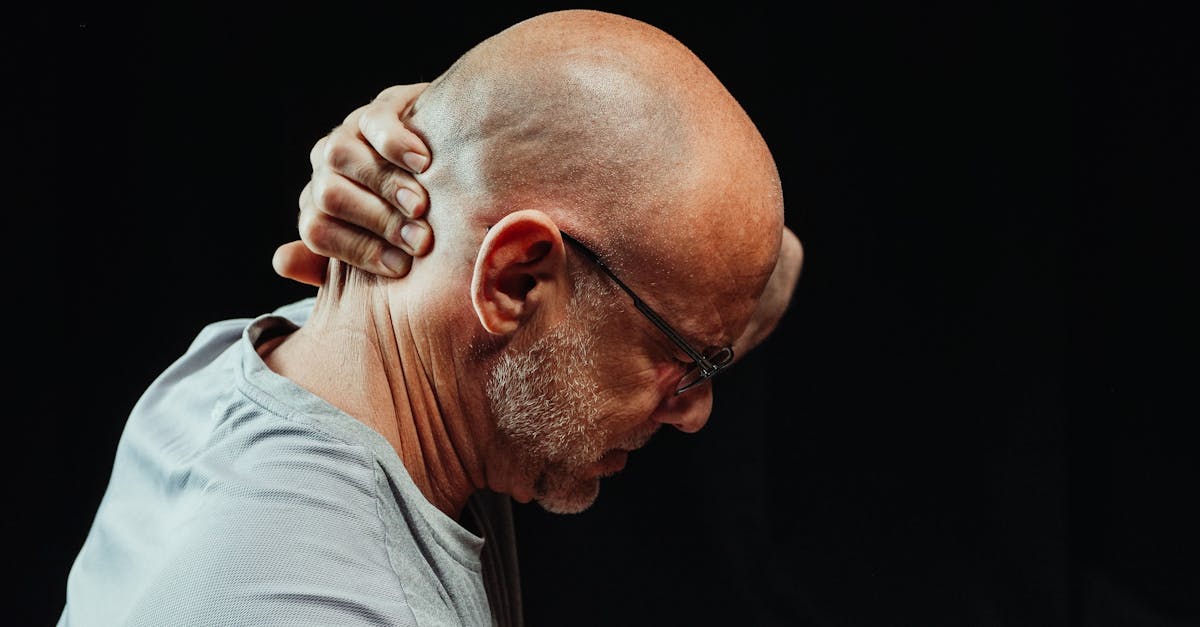|
In Short, the article explores why neck pain is often more prevalent during the winter months. Key factors include muscle constriction due to cold temperatures, reduced blood flow, and the impact of seasonal illnesses. Recognizing these causes allows individuals to implement effective strategies for relief and comfort, such as maintaining good posture and staying hydrated. The benefits of understanding why neck pain increases in winter extend to improved mobility and overall wellness. By addressing these factors, readers can regain their freedom of movement and enjoy a more balanced life during the colder season. |
Unraveling the Mystery: Why Neck Pain is More Frequent During Winter Months
As temperatures drop, many individuals experience an increase in neck pain due to various factors. Colder weather causes muscle constriction, leading to tightened muscles and reduced mobility. The cold also affects blood circulation, further exacerbating existing discomfort. Additionally, the prevalence of winter illnesses such as colds and the flu, along with poor posture while bundled up for warmth or during sedentary indoor activities, contributes significantly to neck pain. Staying hydrated and maintaining an active lifestyle can be critical to managing these pain levels during the winter months.

Welcome to Pulse Align: Rediscover Your Natural Balance
At Pulse Align, we are proud to offer an innovative and non-invasive method designed to help the body recalibrate and restore its natural posture. This gentle approach utilizes imperceptible pulses that support the body’s intrinsic ability to achieve muscle tone symmetry and improve overall function. As a result, clients often experience reduced tension and discomfort in their daily lives.
A Gentle Approach to Wellness
Our philosophy at Pulse Align does not involve directly addressing discomfort or specific conditions; instead, we focus on facilitating the body’s natural recalibration process. This nurturing method empowers individuals to achieve a state of improved comfort and posture organically, without relying on invasive interventions. By prioritizing holistic wellness, we invite our clients to experience enhanced well-being and greater ease in their movements.
Personalized Care for Everyone
Each journey at Pulse Align is unique; we celebrate the incredible stories shared by our clients, highlighting their remarkable improvements in neck and back tension, postural balance, and overall vitality. Families often find that our approach benefits everyone, including children and pregnant women. It is heartening to witness clients report a renewed sense of balance and well-being, resulting from our commitment to fostering healthy neuromuscular connections.
Explore Your Wellness Journey Today
We invite you to visit the Pulse Align website to learn more about our services and discover a clinic near you. Our locations, including La Prairie, Mont-Royal, Terrebonne, and many others, provide a safe and welcoming environment for the entire family. We encourage you to book a consultation and embark on this journey towards enhanced wellness alongside your healthcare team. Remember, Pulse Align works in harmony with your existing health care routines—our focus is on nurturing your body’s natural abilities, helping you reclaim your vitality with a safe, non-invasive approach.
Experience the joy of improved well-being with Pulse Align today!
Medical Disclaimer
The information and advice provided on this site do not replace the advice, diagnosis, or treatment of a healthcare professional. Please note that the author of this article is neither a doctor nor a specialist in a medical specialty as defined by the Collège des médecins du Québec. Manual medicine, functional medicine, and sports medicine as described on this site exclude any medical treatment or diagnosis made by a doctor or medical specialist. Always consult your doctor for any medical questions. For more details, please read our complete Legal Notice.
- Cold Weather: Causes muscle constriction and increased tension.
- Increased Sedentary Behavior: Leads to reduced mobility and stiffness.
- Dehydration: Contributes to muscle stiffness and discomfort.
- Posture Issues: Poor indoor posture exacerbates neck pain.
- Illness: Winter ailments can lead to muscle aches affecting the neck.
- Winter Sports: Physically demanding yet can strain neck muscles.
- Drafty Environments: Exposure to cold air may trigger muscle spasms.

As the chill of winter settles in, many individuals have noticed an uptick in neck pain and discomfort. This seasonal surge can be attributed to a combination of environmental conditions, habitual behaviors, and physiological responses. Understanding these factors is crucial for developing effective strategies to alleviate pain and enhance overall well-being.
The Impact of Cold Weather
One of the predominant factors contributing to increased neck pain during winter is the effect of cold temperatures on our bodies. The body instinctively responds to cold by contracting muscles to conserve heat. This involuntary reaction leads to increased tension around the neck and shoulders, resulting in discomfort and stiffness. As muscles tighten, blood flow to the affected area may be restricted, exacerbating existing pain and limiting mobility.
Movement Reduction
During the colder months, individuals are less inclined to partake in physical activities, which can lead to further complications in neck health. The decreased movement results in joint stiffness and decreased muscle flexibility. Remaining sedentary for extended periods can contribute to the intensification of neck pain, making it essential to incorporate regular stretches and light exercises into one’s routine to maintain mobility and reduce discomfort.
Posture Challenges
The tendency to bundle up during winter can inadvertently encourage poor posture, which can aggravate existing neck pain. Many individuals often adopt awkward sitting or standing positions to keep warm, especially when indoors. This misalignment can lead to improper body mechanics that place strain on neck structures, contributing to chronic neck pain if left unaddressed. Maintaining an optimal posture and utilizing ergonomic furniture can significantly alleviate this tension.
Hydration and Its Effects
Interestingly, a common mistake during winter is neglecting hydration. Cold weather often leads to decreased thirst and lower water intake, exacerbating muscle tightness and stiffness. Good hydration is essential for maintaining muscle elasticity and joint lubrication, making it integral to overall neck health. Prioritizing adequate fluid intake can mitigate some of the discomfort associated with winter-related neck pain.
Seasonal Illnesses and Their Role
Winter also brings an increase in illnesses such as the common cold and flu, which can further complicate neck pain issues. The stress on the body from battling infections can lead to heightened muscle tension. Symptoms like fever and fatigue may also precipitate poor body mechanics as individuals adjust their posture in comfort. Understanding the correlation between seasonal ailments and neck pain is crucial in managing discomfort effectively.
Winter Sports Considerations
Lastly, for those who enjoy winter sports, the increased physical activity can place additional stress on the neck muscles. Activities like skiing or snowboarding, while thrilling, require proper technique and conditioning to reduce the risk of injuries. Incorporating adequate warm-up routines and applying preventive measures can help protect the neck during these dynamic activities.
A Holistic Approach to Neck Pain Management
Understanding the multifaceted reasons behind increased neck pain during winter enables individuals to adopt a proactive stance. Addressing factors related to hydration, movement, posture, and seasonal challenges is essential. By integrating practices consistent with the principles of Pulse Align, such as focusing on neuromuscular health, achieving symmetry, and recalibrating the nervous system, individuals can foster a supportive environment for neck health. Embracing this holistic approach empowers you to navigate the winter months with confidence and ease.
| Factor | Impact on Wellness |
|---|---|
| Cold Temperatures | Cold can induce muscle constriction, leading to tension and discomfort. |
| Reduced Mobility | Less activity can decrease muscle flexibility, increasing stiffness. |
| Posture Changes | Bundling up may result in awkward postures, straining the neck. |
| Hydration Levels | Dehydration contributes to muscle stiffness and elevated neck pain. |
| Winter Sports Activities | Increased physical activity can challenge muscle balance and lead to soreness. |
| Illness Frequency | Winter illnesses may cause muscle tension and contribute to discomfort. |
| Indoor Sedentary Behavior | Extended sitting in poor alignment can adversely affect neck health. |
| Cold Air Exposure | Direct drafts can exacerbate muscle spasm and discomfort. |
| Sleep Environment | Colder months can induce poor sleep conditions, impacting neck comfort. |
| Stress Levels | Higher winter stress can increase muscle tension, contributing to pain. |

Embracing Wellness: Transformative Experiences at Pulse Align
Clients across various regions have discovered how Pulse Align’s unique approach significantly influences their journey towards wellness, particularly in addressing the challenges posed by winter-related neck pain. Many have expressed gratitude for the gentle, non-invasive techniques that target the body’s natural ability to recalibrate and restore balance.
A resident of Saint-Jérôme shared, “I used to suffer from neck stiffness every winter, but since starting my journey with Pulse Align, I’ve noticed a dramatic reduction in discomfort. The gentle pulses I receive here have empowered my body to naturally adjust to the cold, enabling me to enjoy my daily activities again!”
In Châteauguay, another client remarked, “Before I came to Pulse Align, I felt trapped in my own body during the winter months. The support I’ve received has been remarkable. I now understand how hydration and posture play a role in my neck health, and I feel rejuvenated!” The emphasis on understanding the underlying causes behind winter ailments has helped them reconnect with their bodies and regain freedom of movement.
Many clients from Mont-Royal have highlighted the family-friendly environment at Pulse Align. A family who sought services noted, “Our children also benefited from the holistic techniques used here. It’s comforting to know that we can all embark on this healing journey together. Addressing our wellness as a family has truly made a difference.”
Residents in Terrebonne have frequently praised the accessibility and effectiveness of Pulse Align’s services in complementing their existing healthcare practices. “Pulse Align partners with my healthcare team, ensuring that I receive comprehensive support for my neck issues. My experience has been nothing short of transformative,” one client explained.
In areas like Deux-Montagnes and Sainte-Marie, clients are increasingly recognizing how maintaining balance in their bodies aids in weathering the winter months. “The gentle approach at Pulse Align allowed me to feel learned and more aware of how my body functions, which made a significant impact on how I manage my neck discomfort during winter,” said a client from Deux-Montagnes.
For those in Chicoutimi and beyond, exploring the benefits of services at Pulse Align can lead to meaningful improvements in overall wellness. Our focus on individualized care ensures every client feels heard and supported on their journey.
Clients are encouraged to discover more about Pulse Align’s offerings and how they can enhance their health journeys by visiting our Our Clinics page, where services are catered to each community’s needs. Our commitment to working alongside healthcare teams ensures that families receive the dedicated support they deserve in their path to wellness.
Neck pain is a common ailment that many individuals experience, particularly during the winter months. The reasons behind this seasonal variability are multifaceted and often stem from the body’s natural responses to colder temperatures. Understanding these underlying mechanisms is critical for effective management and relief strategies. The cold air typically leads to muscle constriction, decreased blood flow, and altered physical activity patterns, all of which can exacerbate pre-existing neck conditions.
To shed light on this issue, we turn to Dr. Sylvain Desforges, an esteemed expert in osteopathy, naturopathy, and manual medicine. As the founding president of TAGMED clinics and the ACMA association, Dr. Desforges has dedicated his career to healthcare innovation. His extensive expertise lies in chronic pain management and the use of advanced therapeutic technologies, including spinal decompression, laser, and shockwave therapy. By providing evidence-based care, he aims to optimize the health and well-being of his patients.
One of the primary factors contributing to increased neck pain in winter is the body’s involuntary reaction to cold temperatures. As the weather cools, our muscles naturally contract to preserve heat. This muscle tension leads to stiffness, discomfort, and often chronic pain, particularly in the neck and shoulder regions. Furthermore, reduced physical activity during the winter months can compound this issue, causing joint stiffness and muscle tightness to become more pronounced.
In addition to these physiological responses, winter often brings about a higher incidence of illnesses such as the common cold or flu. These ailments can induce significant body stress, aggravating existing neck pain. When individuals are unwell, they tend to adopt less-than-ideal postures—often hunching over or lying down for extended periods—which can further strain the neck muscles. Thus, winter not only promotes muscle tension but also encourages behaviors that exacerbate neck discomfort.
Dr. Desforges believes that a comprehensive approach is necessary to address these challenges effectively. His clinics provide tailored services designed to support patients in managing their neck pain throughout the winter months. By focusing on restoring natural balance and alleviating tension, patients can experience significant improvements in their quality of life. The integration of innovative technologies such as spinal decompression therapy allows for targeted intervention that can relieve pressure on the neck and restore mobility.
In addition to manual therapy and advanced technology, Dr. Desforges educates his patients on the importance of staying active during the winter. Encouraging regular stretching, neck exercises, and maintaining proper posture even while indoors can assist in mitigating the common symptoms associated with colder weather. Proper hydration is also emphasized, as many individuals forget to drink enough fluids during the winter, which can lead to muscle stiffness and discomfort.
Through his dedication to evidence-based care and innovative approaches, Dr. Sylvain Desforges empowers individuals to take control of their health. His insights into the reasons behind winter neck pain not only provide clarity but also foster a proactive stance against discomfort. By accessing the resources available at TAGMED clinics, individuals in Montréal, Terrebonne, and Mont-Royal can find the support needed to navigate the complex relationship between seasonal changes and neck pain, ultimately leading to improved well-being.
Neurovertebral Decompression Technology by TAGMED
Mechanism of Action
The neurovertebral decompression technology offered by TAGMED operates by applying a controlled, progressive traction force to the spine. This innovative approach effectively increases the space between the vertebrae, alleviating pressure on the intervertebral discs and nerve roots. By creating this additional space, TAGMED’s method enhances the circulation of fluids within the targeted area, which is vital for delivering essential nutrients and oxygen to the tissues. This process plays a significant role in reducing inflammation and relieving pain associated with conditions such as disc herniation, disc bulging, and moderate to severe spinal or foraminal stenosis.
Specific Benefits
One of the standout features of this non-invasive method is its capability to provide effective relief from chronic pain and symptoms related to aforementioned conditions. By decreasing the pressure exerted on the nerve structures and optimizing the fluid flow around the affected discs, TAGMED’s decompression therapy promotes quicker recovery. Patients often report significant improvements in their quality of life, as the decrease in pain levels enables them to engage in their daily activities more freely, especially during winter when neck symptoms can be exacerbated.
Comparison with Other Treatments
When comparing TAGMED’s neurovertebral decompression technology with other common therapeutic approaches, such as pain medications, corticosteroid injections, surgery, or traditional physical therapy, several advantages become evident. Traditional treatments often involve invasive procedures or carry potential side effects. In contrast, TAGMED’s technique is uniquely non-invasive, minimizing the risks associated with pharmacological treatments. Furthermore, many patients experience a quicker recovery time, enhancing their overall treatment experience and outcomes. This becomes especially pertinent for individuals suffering from neck pain exacerbated by the winter months, as they may require gentle yet effective interventions.
Case Studies or Testimonials
Numerous patients have shared positive experiences following neurovertebral decompression therapy at TAGMED. For instance, one patient who had dealt with persistent neck discomfort and headaches noted a considerable and lasting reduction in pain levels after just a few sessions. Another testimony emphasizes how a patient was able to significantly decrease their reliance on pain medications following treatment, enabling them to resume daily activities sooner than expected. Such real-life improvements underscore the efficacy of this approach, particularly during the challenging winter months where neck pain often intensifies due to various environmental factors.
The onset of winter brings not only the beauty of snowflakes and the festive season but also a myriad of challenges for our bodies, particularly regarding neck pain. Understanding why this discomfort tends to intensify during colder months is essential for developing effective relief strategies. Cold weather inherently causes muscle constriction, leading to increased tension in the neck area. As the body strives to preserve heat, tightness around shoulders and neck can significantly contribute to discomfort.
Additionally, the decrease in outdoor activities due to frigid temperatures translates into reduced mobility. A sedentary lifestyle during winter can exacerbate issues related to joint stiffness and muscle tightness. Prolonged periods of inactivity can lead to a decline in muscle flexibility, requiring individuals to undertake gentle stretching and mobility exercises to counteract these effects.
Winter is also synonymous with an uptick in seasonal illnesses like the common cold and flu. When the body is at war with these ailments, the resultant muscle ache can heighten existing neck discomfort. Moreover, the domino effect of illness often leads to poor posture, whether from curling up on the couch or hunching over while using devices. Such postural habits only serve to aggravate neck pain, creating a vicious cycle.
Furthermore, environmental factors, including dehydration from dry winter air, can play a crucial role in the prevalence of neck pain. As hydration decreases, muscles and joints can become less pliable, resulting in discomfort. Understanding these interconnected factors empowers individuals to address their neck pain proactively and embrace healthier habits during the winter months.

Do you suffer from discomfort caused by imbalances that respond little or not at all to conventional solutions?
As we delve into the exploration of seasonal discomforts, especially those that seem to intensify during the winter months, understanding the intricate relationship between our environment and our bodies is crucial. Pulse Align embodies an innovative, non-invasive solution to support your natural balance and posture through gentle, imperceptible pulses. This method aids in restoring the body’s inherent equilibrium and may lessen muscle and joint tension, enabling a more comfortable experience throughout the chilly season.
What sets Pulse Align apart is its holistic approach that does not focus directly on discomfort or conditions. Rather, it emphasizes the body’s remarkable ability to recalibrate itself naturally. This support often leads to significant improvements in comfort and posture, helping our clients find a renewed sense of well-being. By fostering an optimal alignment and muscle tone symmetry, clients frequently report enhanced ease of movement, contributing to their overall wellness experience.
The personalized touch of Pulse Align is a cornerstone of how we operate. Clients have shared inspiring stories highlighting their remarkable transformations where discomfort lessened significantly, leading to greater vitality and balance. Testimonials speak to improvements in neck and back tension, as well as a general uplift in their state of well-being. The positive feedback not only demonstrates the effectiveness of our gentle techniques but also showcases how every client’s journey is unique and celebrated at Pulse Align.
To learn more about how Pulse Align can complement your journey towards improved well-being, we invite you to visit our website and find nearby locations, including our clinics in La Prairie, Mont-Royal, Terrebonne, and more. Booking a consultation can be a pivotal step toward embracing a more balanced and harmonious life. Remember, Pulse Align serves as an ally alongside your existing healthcare services, empowering you with innovative techniques that are safe for the entire family, from young children to expectant mothers.
Discover the potential benefits of integrating our approach into your wellness routine. For additional details and to schedule your appointment, visit our website: Pulse Align. Your journey toward a harmonious balance begins with the first step!
Frequently Asked Questions
Neck Pain
- Is cervical osteoarthritis common?Yes, it’s common with age. Cartilage in the cervical joints wears down, causing pain and stiffness.
- Does dehydration worsen neck pain?Mild dehydration may increase muscle fatigue, indirectly affecting neck pain.
- How can I quickly relieve neck pain?Gentle stretches, applying heat, light massages, improving posture, and relaxation exercises can provide temporary relief.
- Is osteopathy effective?Many find relief through osteopathy, which aims to restore musculoskeletal balance.
- Can stress increase neck pain?Yes, stress causes muscle tension in the neck, worsening the pain.
- Can neck pain cause headaches?Yes, tension in the neck muscles can radiate and trigger tension-type headaches.
- Is physiotherapy effective?Yes, a physical therapist can provide exercises, stretches, and manual therapy to relieve cervical pain.
- Do posture reminder apps help?Yes, they encourage you to straighten your head and reduce time spent in poor positions.
- Do ergonomic pillows help?Yes, a suitable pillow supports the neck’s natural curve, reducing tension and neck pain.
- Can meditation help?Meditation reduces stress and muscle tension, indirectly aiding in relieving neck pain.
Sophie Gambert understands that neck pain is far more than a physical ache—it’s a roadblock to living the life you love. As a Neck Pain Awareness Advocate at Pulse Align, she is committed to shedding light on the underlying causes, sharing practical relief strategies, and offering genuine support to readers seeking to reclaim their freedom of movement. With a warm, empathetic voice and a keen eye for the latest in pain management research, Sophie leads conversations that uplift, educate, and inspire. She believes that every individual deserves to feel heard, understood, and guided toward healing, one step at a time.
Medical Disclaimer
The information and advice provided on this site do not replace the advice, diagnosis, or treatment of a healthcare professional. Please note that the author of this article is neither a doctor nor a specialist in a medical specialty as defined by the Collège des médecins du Québec. Manual medicine, functional medicine, and sports medicine as described on this site exclude any medical treatment or diagnosis made by a doctor or medical specialist. Always consult your doctor for any medical questions. For more details, please read our complete Legal Notice.


